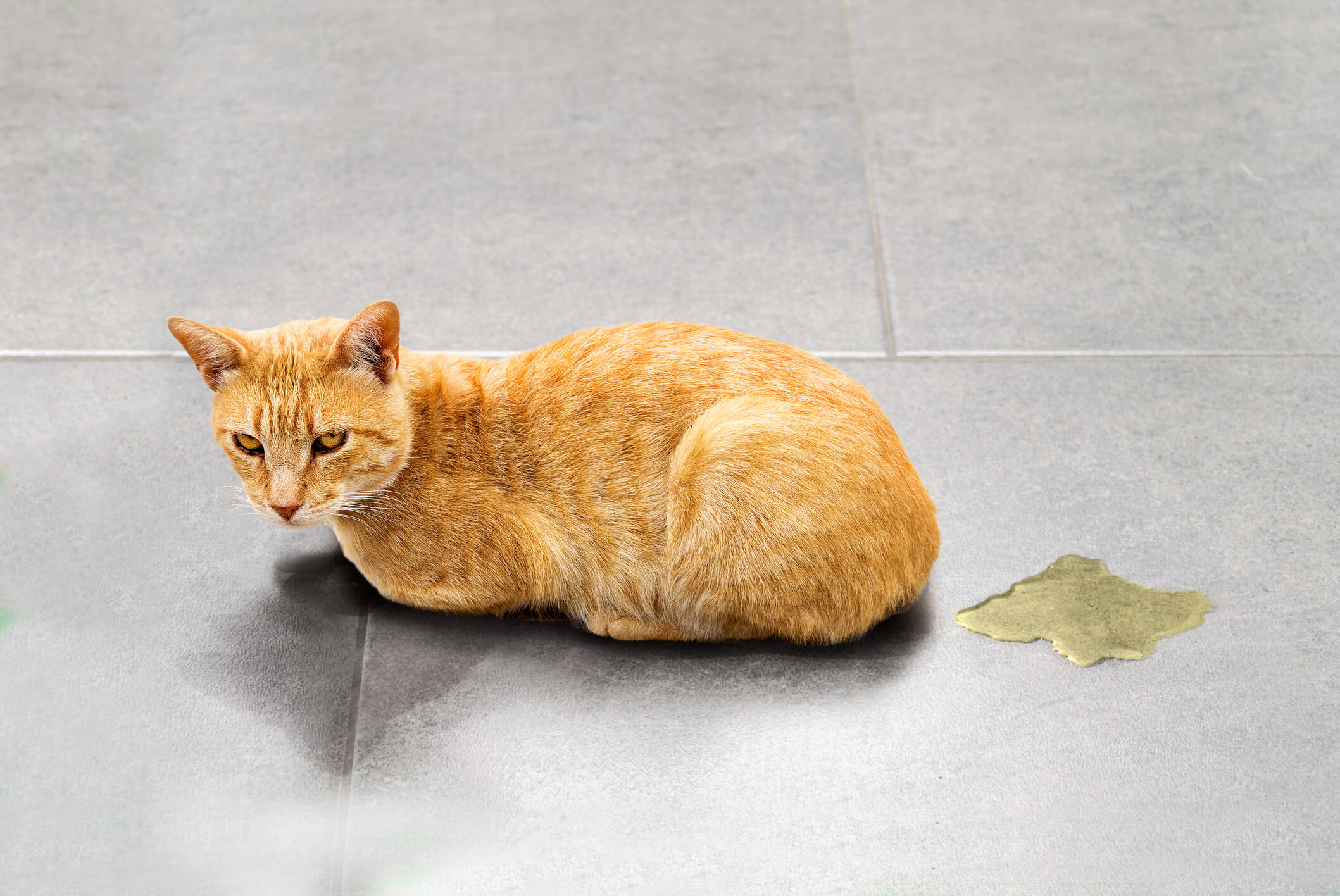
What Causes Urinary Incontinence in Cats?
Urinary incontinence affects many cats as they get older, and the symptoms are hard for owners to ignore. All of the sudden, your cat might decide they’d rather do their business on your freshly cleaned floors than in the litter box. However, you shouldn’t dismiss this as a behavioral problem. Instead, this should serve as a warning to cat owners that urinary incontinence could be to blame.
What is urinary incontinence?
Urinary incontinence occurs when a cat loses control over their ability to urinate. Cats afflicted with urinary incontinence might also have difficulty controlling the excretion of fecal matter. A cat becomes incontinent when the muscles surrounding their elimination organs are too weak to control the release of urine and feces. This often results in waste left around the house, outside their litter box.
Symptoms of urinary incontinence usually include leaving involuntary trails of urine on the floor and straining to defecate. Incontinence is also characterized by a cat defecating everywhere except the litter box and frequent urination beyond what’s considered the normal amount. Incontinent cats will display a change in behavior that’s often considered inappropriate but is actually the result of losing control over their bodily functions.

Things that lead to incontinence in cats
The most common cause of urinary incontinence among cats is old age. Geriatric cats lose strength in their muscles over the years, including the muscles that control the urinary tract. The aging process is normal and will ultimately come with some side effects. Incontinence due to old age, while frustrating, isn’t cause for concern as long as you have an otherwise healthy cat.
A cat may also become incontinent if they have a urinary tract infection. Infections and incontinence have overlapping symptoms like frequent urination and going to the bathroom outside the litter box. These behaviors can also signal the presence of kidney stones, so it’s best to have a vet examine your cat to detect potential underlying conditions.
Additionally, cat owners should note that what might appear to be urinary incontinence could actually be related an entirely different medical condition. If your cat displays symptoms of urinary incontinence, always check with a veterinarian so your cat can receive a proper diagnosis. Too often, owners mislabel their cats’ behavior as urinary incontinence when the real problem is much worse.
For example, frequent and inappropriate urination are common indicators of urinary incontinence, but they could also be a sign that your cat has diabetes mellitus. Diabetes occurs in cats more often than you might think, and felines who are overweight and eat a poor diet are more likely to become diabetic in their lifetime. If your cat appears incontinent, take them to the vet right away. Untreated diabetes makes your cat predisposed for a long list of other health problems.
Not all cats who pee outside the litter box are incontinent or unhealthy, either. The problem might simply be that it’s too painful to get in and out of the box. In addition to urinary incontinence, senior cats are also likely to develop osteoarthritis. If this is the case, your cat might not have trouble urinating at all—swollen joints may have made the litter box less accessible.
Treatment options for senior cats
Vets can recommend a variety of ways to treat your incontinent cat depending on the cause. Urinary incontinence caused by weak muscles in senior cats is easily treated with muscle stimulants. These give your cat greater control over the muscle groups that are attached to their elimination organs.
A controlled diet can reduce instances of diarrhea among incontinent cats. Your feline companion needs the right balance of fiber, probiotics and quality protein to help regulate the digestive system. It won’t cure their incontinence, but feeding your cat the right foods can ease their discomfort and eliminate some of the frustration that comes with a cat who defecates everywhere.
Even if your cat isn’t incontinent, you can reteach good bathroom behavior by replacing their current litter box with one that’s easier on their old joints. Opt for a tray with shallow walls so arthritic kitties are more likely to do their business on the litter instead of your carpet. Also, put a litter box on each floor of your home so senior cats don’t have to travel up and down the stairs.
Urinary incontinence is frustrating for cat owners but manageable once they figure out the underlying cause. Cats who show signs of incontinence should receive an examination from the vet. Only then can owners fully understand what’s wrong and give their cats the appropriate treatment plan. As taxing as it is to clean up cat pee, a bigger concern is exactly why it’s happening in the first place.


